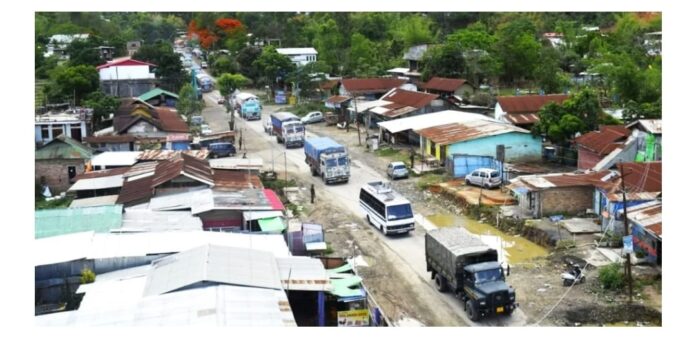In a commendable display of resilience and determined efforts, Manipur has successfully restored vehicular traffic to the Imphal Valley after several days of disruption caused by recent incidents of violence. Following a road blockade at strategic locations such as Kangpokpi, the vital supply route via National Highway 2 had been completely cut off since May 3, severely affecting the flow of essential goods and services to the valley.
However, the authorities, in collaboration with security forces and local communities, worked tirelessly to address the situation and restore normalcy. With a shared objective of ensuring the well-being of residents and the efficient functioning of the region, a coordinated effort was undertaken to reopen the crucial transportation artery.
The restoration process involved intense negotiations, active community participation, and diligent efforts by law enforcement agencies to resolve the underlying issues that led to the road blockade. While the specifics of the incidents and the motivations behind the unrest are yet to be fully disclosed, the focus remained on ensuring the safe and timely resumption of vehicular movement to mitigate the impact on the Imphal Valley’s populace.
Moreover, these efforts were accompanied by an emphasis on maintaining security and stability in the region. Authorities took proactive measures to identify and neutralize potential threats, including the recovery of explosives that were discovered along the disrupted route. This diligent action by the security forces not only contributed to the restoration of traffic but also helped restore a sense of confidence and security among the local population.
The reopening of the supply route to the Imphal Valley signifies a significant milestone in the ongoing efforts to restore normalcy in Manipur. It has reestablished vital connections and paved the way for the resumption of essential services, the transportation of goods, and the revival of economic activities that had been hampered by the blockade.
The successful restoration of vehicular traffic stands as a testament to the resilience and determination of the people of Manipur, who rallied together to overcome the challenges posed by the recent unrest. It also highlights the collaborative spirit and effective coordination between various stakeholders, including the government, law enforcement agencies, and local communities, who united in their efforts to restore peace and stability.
As the region looks towards the future, it is imperative to address the root causes of the recent disturbances, fostering dialogue and understanding to prevent similar incidents from recurring. By nurturing an environment of inclusivity, cooperation, and development, Manipur can build a foundation for sustained peace and progress, ensuring a brighter and more prosperous future for its residents.
While the road to recovery may be long and arduous, the restoration of vehicular traffic to the Imphal Valley brings a glimmer of hope and marks a significant step forward in restoring normalcy and harmony in Manipur. With continued efforts and unwavering determination, the region can overcome its challenges and emerge stronger than ever before.
The recent events in Manipur have underscored the importance of open communication, trust-building, and conflict resolution mechanisms within society. It is crucial for the government to engage with all relevant stakeholders, including community leaders, civil society organizations, and marginalized groups, to understand and address the underlying grievances that led to the unrest.
Socio-economic development initiatives must also be prioritized to create opportunities for the local population, reducing the feelings of frustration and alienation that can contribute to unrest. Investments in infrastructure, education, healthcare, and job creation can not only improve the lives of the people but also promote stability and social cohesion.
Furthermore, efforts should be made to strengthen the security apparatus and enhance intelligence gathering capabilities to prevent the recurrence of such incidents. Collaborative efforts between state and central security forces, as well as intelligence agencies, can help




